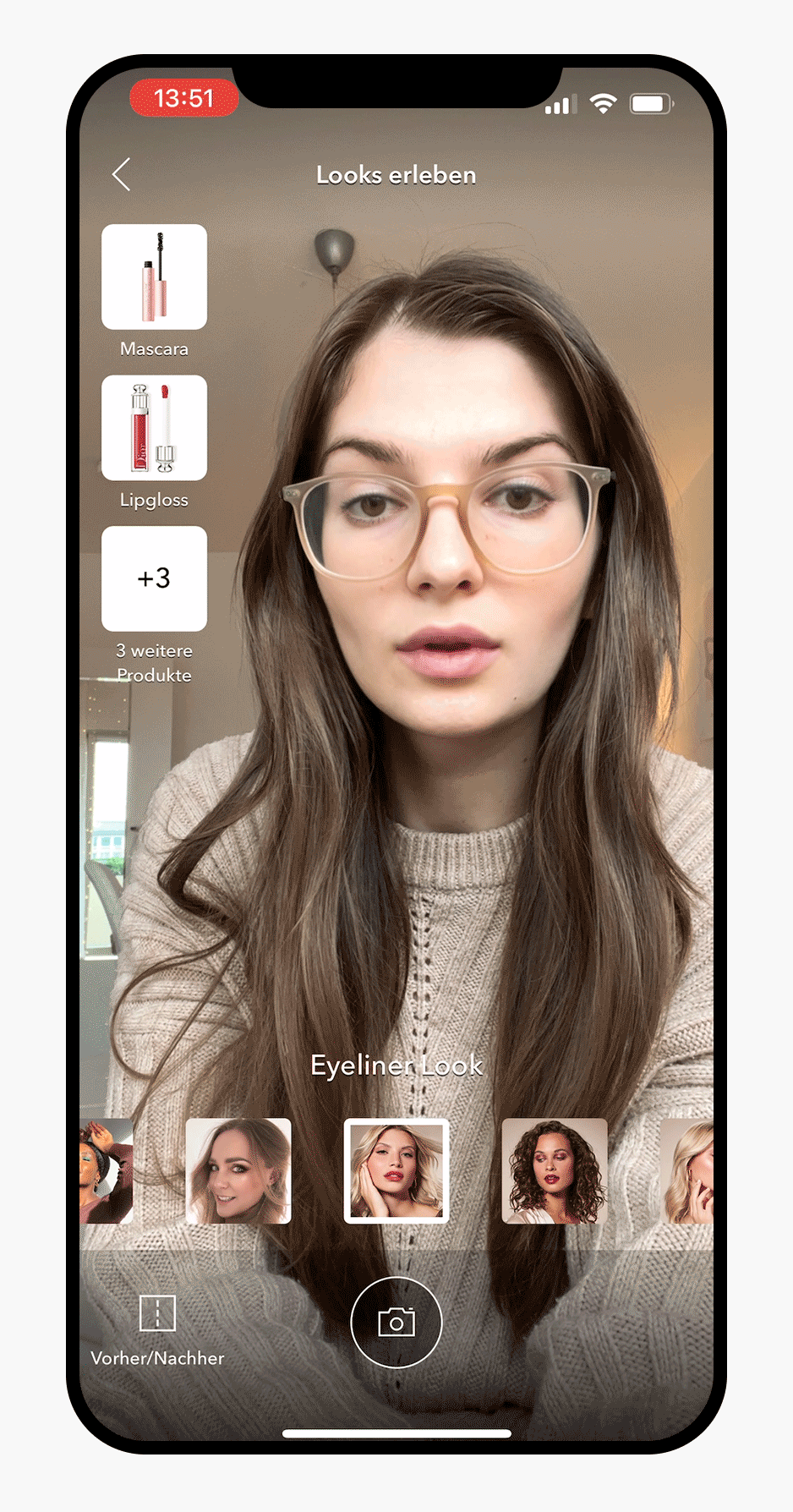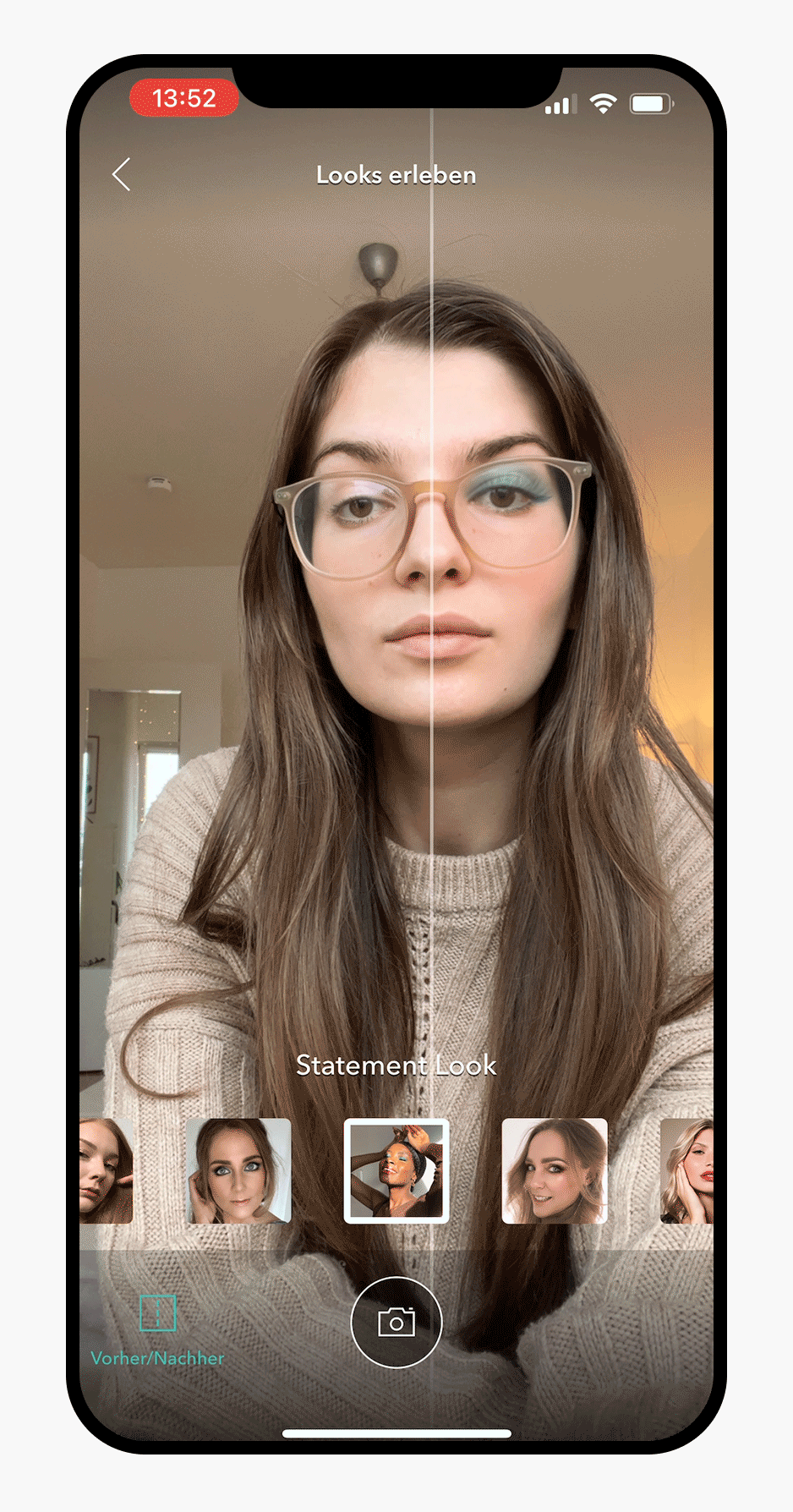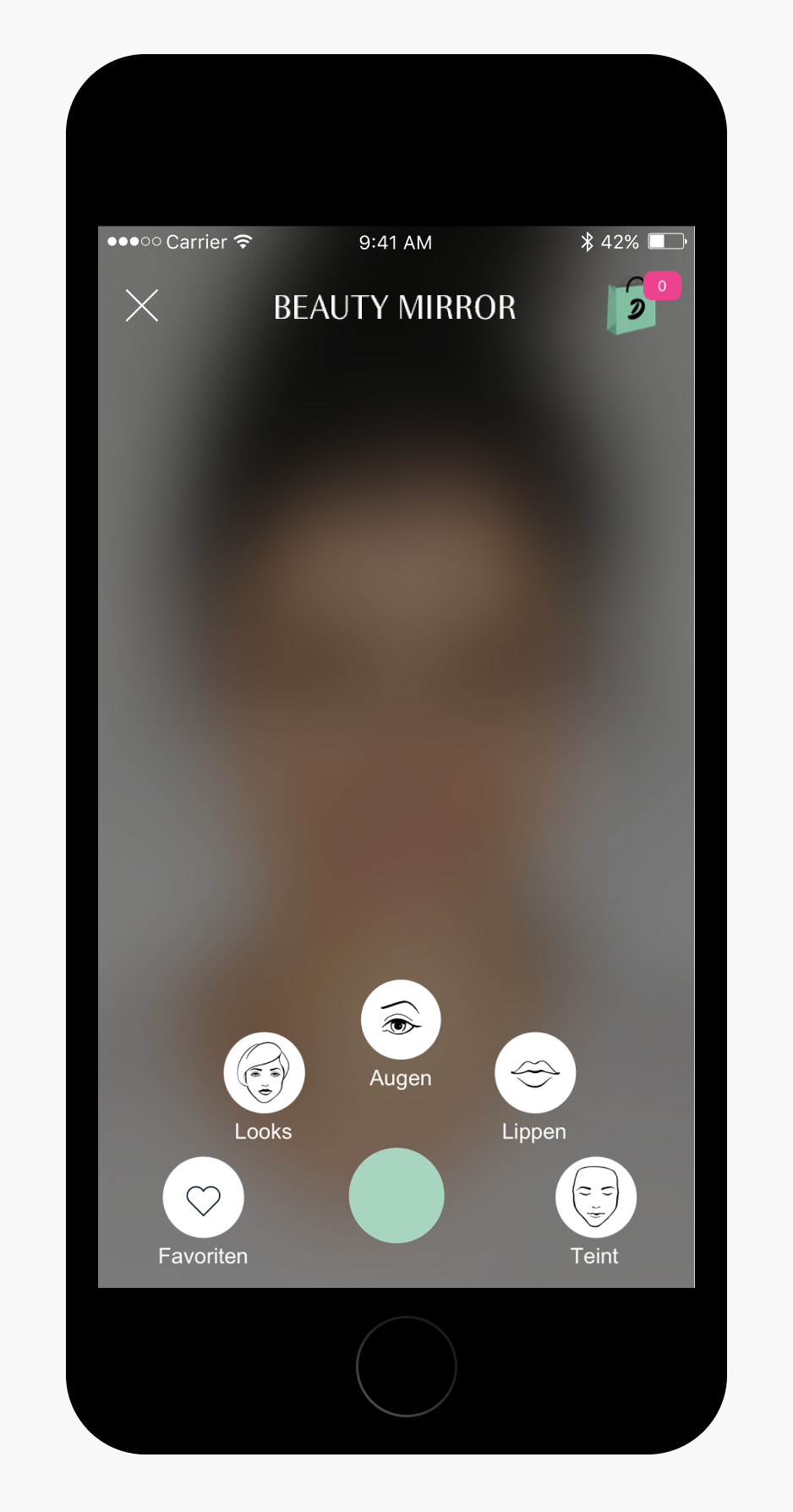Douglas Beauty Mirror
December 2018 – Mai 2019 • Redesigning an AR Tool
The Challenge
The beauty mirror was an existing feature in the Douglas app, that enabled users to try on make-up products. The goal was to give it a visual & technical refresh. The initial redesigned flow was created by my colleague Dario Raijman, before leaving the company. I then took over the project for the app, and worked closely with the PO.
Problem 🔥
The Beauty Mirror used an obsolete design system and could have a simpler navigation between categories.
Solution 💡
Redesign the UI with the current design system of the app, adjust the navigation concept and use popular AR apps like Snapchat & Instagram for reference.
The Process
Defining Goals
-
• Enable displaying more than 3 categories
• Enable the before & after function of the SDK
-
• Adjust navigation for easier use
• Update UI with new design system to stay consistent in the app
• Use Snapchat & Instagram as reference, to enable familiarity with feature, considering a third of our target audience are heavy social media users
-
• Create noticeable entry point on homepage
• Integrate Beauty Mirror in shopping journey on the product detail page
The Flow
When I took over the project from my colleague, I mostly kept the concept of his flow as it was, completed the flow with adding the photo & share functions & defined the error cases & loading states. The PO created the MVP and the flow below ended up being the scope for the first iteration.
Discover Looks
The layout of the Beauty Mirror ended up being quite similar to the old one, this had the benefit of not needing to onboard existing users to what has changed. The main adjustments were:
Increasing legibility with the help of dark overlays and subtle text shadows
Adjusting the product images to squares, to ensure that wide products are not cut off
Adding category names below the product images to help identify the type of products
Centering the photo button to make taking a photo & sharing it a more central functionality, with the hope to drive popularity of the feature & app
Before & After
The Before & After function helps understand all the subtle ways the looks & products have altered the users’ face. When active, suggested products are hidden to reduce cognitive load, which in addition frees up space to easily drag the divider.
Discover Products
To discover products, the new design enables switching between make-up categories with a swipe. Previously, the users had to return to back to a menu to switch from e.g. eyes to lips, which took significantly more time. The new layout allows for far more categories than before.
Trying on Product while Shopping
By including a button on the product detail page, the users can easily try on various colors and discover what suits them best. It solves the issue of not being able to try on the product before buying it online and helps ease the paradox of choice.
The Unconducted Testing
As testing was only done on very rare occasion by an external company, I decided to create a test setup that could enable us to test ourselves on site with little additional cost. In addition, I created a test plan & test script. Because of the strict timeline, full roadmap and low UX Maturity at the time, the testing ended up being cancelled.
Testing Room
Observation Room
Takeaways
The entry point on the product detail page should have been placed closer to the image & colors, where it contextually belongs. It should have been above the fold, to increase visibility and therefore usage
The primary mint color that is used to signify active states is not sufficiently visible. It would have been ok to break consistency in favor of better contrast.
Instead of creating a long and ‘ideal’ testing concept & script, I should have conducted a quick and informal hallway test with 5 subjects before presenting the designs
Commit to deadlines with a clear date, to reduce risks of misunderstanding
Be open to feedback & suggestions by the developers
Credits
Photos by Mathilde Langevin & Jake Nackos on Unsplash






